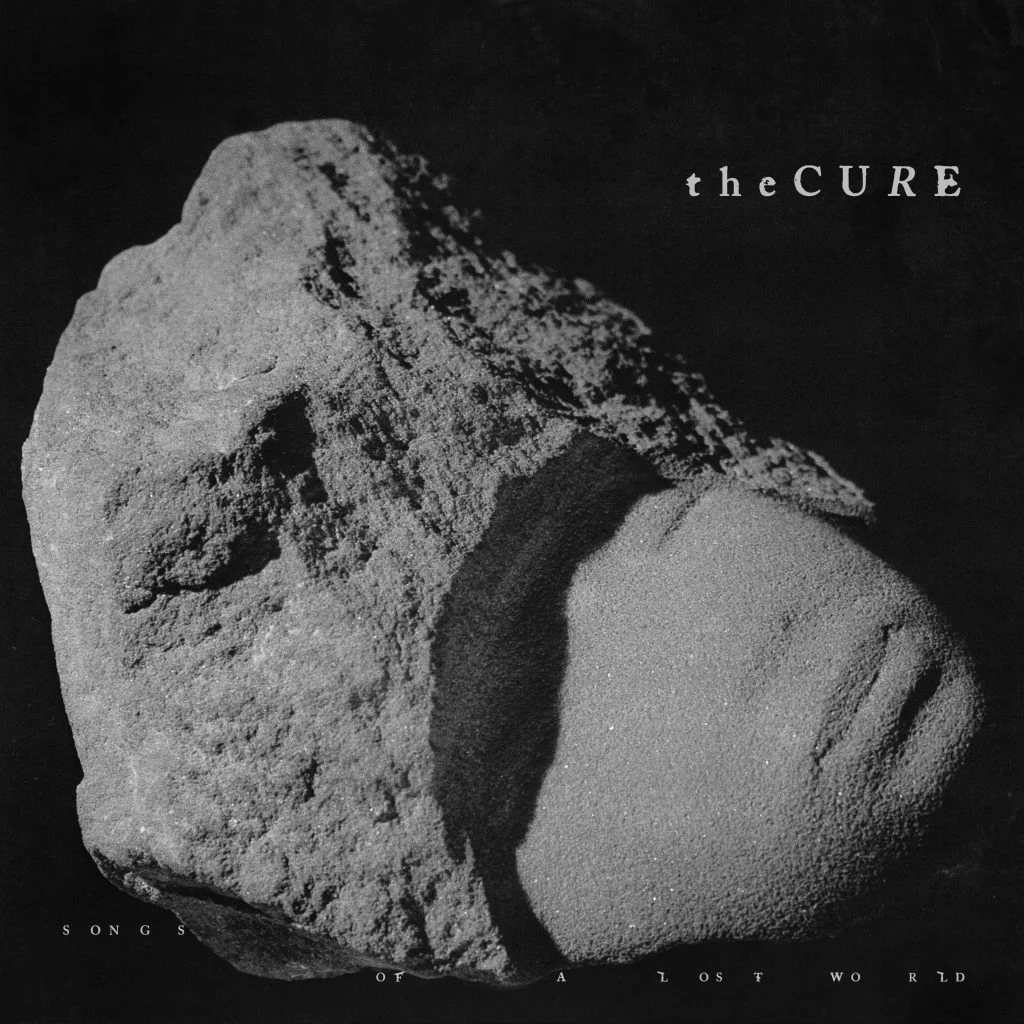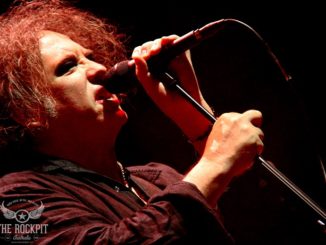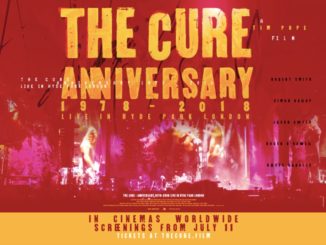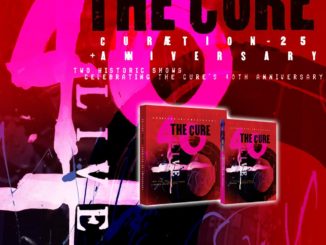
Songs of a Lost World is the first new studio album from The Cure in sixteen years. Fans always hope for one more classic album from veteran bands (hard to believe debut album Three Imaginary Boys arrived in 1979). While some early opinions hype Songs of a Lost World as The Cure’s best since Disintegration (1989), that’s overlooking Wish (1992) and Bloodflowers (2000). While Wild Mood Swings (1996) offers a little something for everyone, it’s difficult to imagine every Cure fan regularly listening to it from start to finish. Self-titled album The Cure (2004) has some high points, but is inconsistent. 4:13 Dream (2008) was mostly below the line, though I’m sure it has its fans. In my estimation, the last great Cure album was Bloodflowers and Songs of a Lost World is their best and most consistent album since.
I enjoyed an early preview of the album when I heard five songs performed live in Atlanta in 2023: “Alone,” “A Fragile Thing,” “And Nothing Is Forever” “Endsong,” and “I Can Never Say Goodbye” (that’s sixty-three percent of Songs of a Lost World). Playing new songs, especially before the audience has a chance to sit with them, can be risky. I remember being surprised by how good these songs sounded. Hearing them on record, I am just as impressed.
If you didn’t catch The Cure on that tour, the physical album provides two important visual and textual clues about the musical content. To begin with, the cover art features a sculpture by Janez Pirnat titled Bagatelle (1975). In a November 6, 2024 article on Artnet, Min Chen explains that Robert Smith saw the piece while flipping through a book and almost immediately wanted to use it for the cover. However, “in 2021, when Smith tried to contact Pirnat to use his sculpture for the forthcoming record, he learned the sculptor had died—on the same day, no less, that the musician discovered his work.” Pirnat’s widow granted permission and even gifted the work to Smith. Cure cover artist Andy Vella explains that he “pictured it floating in space, almost as a distant relic from a forgotten time; a buoyant force resisting any kind of gravity.” Additionally, the liner notes begin with the final six lines of “When I Have Fears That I May Cease to Be,” a sonnet by John Keats about dying before fulfilling all of one’s life goals and dreams.
The first track conjures peak Cure. The moody and atmospheric “Alone” is quintessential Cure and the keystone for Songs of a Lost World. Smith remembers, “It’s the track that unlocked the record; as soon as we had that piece of music recorded, I knew it was the opening song, and I felt the whole album come into focus” (September 26, 2024 NME). “Alone” struggles with the reality of impermanence and change—“the world is nothing / but a dream.” Smith sings, “we were always surе / that we would stay the same / but it all stops.” As Smith acknowledges, there is a lyrical and thematic connection between the poem “Dregs” by Robert Dowson and “Alone.” For example, compare the two opening lines from “Dregs”—“The fire is out, and spent the warmth thereof, / (This is the end of every song man sings)”—with these from “Alone”: “This is the end / of every song that we sing / the fire burned out to ash.” In the lush “And Nothing Is Forever” Smith seems to reconcile himself to the difficult recognition of transience as the essential truth of life and offer the possibility of companionship as remedy. He says, “I know / that my world is grown old / but it really doesn’t matter / If you say we’ll be together.” “A Fragile Thing” explores the delicate nature of romantic relationships and the inevitability of parting. The dramatic and atmospheric “Warsong,” the album’s shortest track, surveys the wreckage from an emotional battlefield seemingly created by two people who can do nothing but fight one another. As Smith laments, “all we will ever know / is bitter ends / for we are born / to war.”
And suddenly we are already halfway through. At a runtime of just over forty-nine minutes, Songs of a Lost World is a proper album, though a listing of just eight tracks makes it look and feel shorter. The percussive “Drone:Nodrone” picks up the pace and settles into a groove. It’s far from a happy tune, though: “down / down / down / yeah I’m prеtty much done.” The devastating “I Can Never Say Goodbye” heartbreakingly documents the passing of Smith’s brother, Richard (“something wicked this way comes / to steal away / my brother’s life”). “All I Ever Am” focuses on the fruitlessness of rumination over personal history and the past.
The record’s final track is also its longest at over ten minutes. In an October 30, 2024 article for The Independent, Mark Beaumont reveals that “Endsong” was inspired by “a starlit night that reminded Smith of a similar evening in 1969, stargazing in the back garden with his father when Apollo 11 landed on the moon.” Smith reflects, “I grew up in the glorious 30 years from the end of the Second World War—the world that I was born into was getting incrementally better every year. It just seemed that the world was on an upward trajectory and the moon landing was part of that.” However, “around the time I turned 16 in ’75, it seemed like the world sort of stalled and it’s been travelling down ever since.” “Endsong” perfectly captures that feeling of disappointment when we realize that life does not stay at its peak and the world is not all magic. Smith sings, “and I’m outside in the dark / staring at the blood red moon / remembering / the hopes and dreams I had / and all I had to do / and wondering what became of that boy / and the world he called his own.”
Like Smith looking into the sky, we all have these moments when we feel optimistic and unstoppable, all in sync, the world making sense and spinning on the end of our fingertips for just a moment. I felt this in 8/8/08 when my wife and I bought our house. Key in an unlocked door, we stood hand-in-hand on the doorstep looking at the clear night beyond the horizon. I said, “Enjoy this moment because it won’t always be like this.” I did not know how things would change, only that they would change. Since then, together we have lost parents, grandparents, pets, friends, and pieces of ourselves as well. This is the way of things. There, of course, have been gains, too. But those are not what keep you up at night wishing, wondering, regretting. Still, I remember that night and the fuzzy, blue edges of the stars, the chorus of crickets, the heat of her hand in mine, the feeling that we could do anything, the future a great banquet we had just begun. We still live in this house. We still dream all these dreams.
The young often romanticize death, in love with death as only the young can be, distanced from death as they are. As one ages, however, the losses accumulate and deepen until it can feel like loss is your only constant, a strange friend for every occasion, a regular visitor one cannot turn away, the cold guest that never leaves. Nothingness becomes more tangible, oblivion a sure destination. The end first standing still, then creeping, then jogging, and finally sprinting toward you as the Great Seesaw, far past the halfway point, tilts closer and closer to the dirt. The Cure document this tragic passage and offer no easy relief. “But the answers I have / are not the answers that you want,” confesses Smith in “Drone:Nodrone.” There’s nothing romantic or abstract about death here; Songs of a Lost World is an album informed by hard personal tragedy as Smith’s mother, father, and brother all passed since 4:13 Dream. The specter of loss haunts every song. Songs of a Lost World is a soundtrack for endings. The final word of “Endsong” and the album is nothing.
As to what happens next, who knows? Smith suggests he will retire in five years when he reaches 70. It’s remarkable that Smith’s age does not show in his voice, so his hesitation about continuing beyond 70 doesn’t seem based on any evidence of declining abilities. Rolling Stone UK reported in 2022 that Smith has a solo album he’s been “chipping away at.” On October 13, 2024 NME quoted Smith as saying a second new album is “virtually finished” and a third is in the works. A set of lyrics to “Bodiam Sky” appears halfway through the booklet of Songs of a Lost World, at least in the deluxe edition. According to various internet posters, Smith said in an interview that “Bodiam Sky” was going to conclude the album until he changed his mind, but the song may show up in the future. So in addition to the archival releases of live, demo, unreleased, and B-side tracks that have been appearing, it seems reasonable to expect—at some point—new studio work (as the lyrics to “Bodiam Sky” state, “we can dream to the end”). If not, Songs of a Lost World is a powerful final studio statement from a band that has made a long career exploring the fragile and ephemeral, dreams denied, delayed, and delivered.



